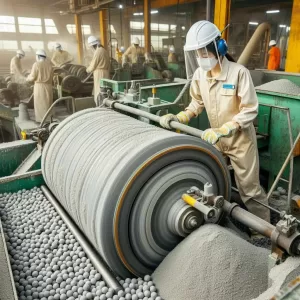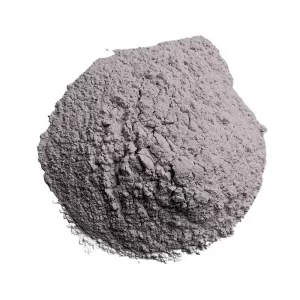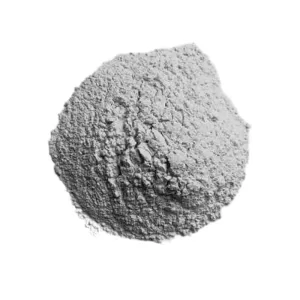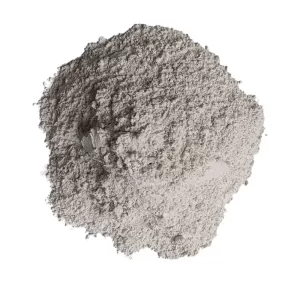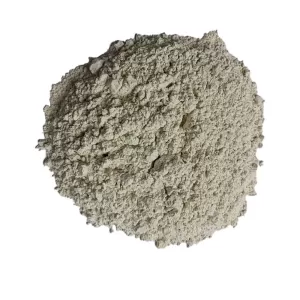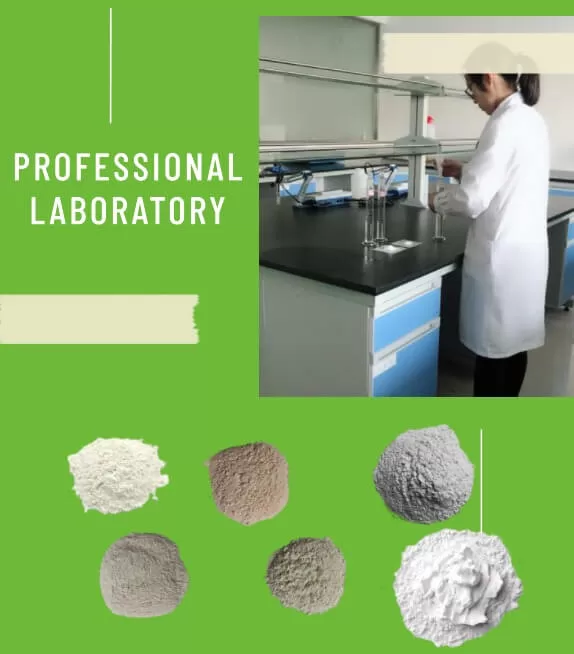Due to structural factors, the natural bentonite internal surface area is relatively large, the internal surface brings huge internal surface energy, so that it has a better adsorption capacity. Although bentonite adsorption performance is better, but in the unmodified conditions, natural bentonite in water, the interlayer ions will be hydrolysis reaction, reducing its adsorption capacity, which also limits the application of bentonite in the pollution treatment, therefore, it is necessary to bentonite modification treatment.
1, Bentonite modification technology
(1) high temperature modification
Natural bentonite surface water film on the adsorption of pollutants have a hindering effect, after high-temperature roasting, bentonite internal in various forms of water will evaporate, and take away some of the impurities, which makes the spatial structure of the bentonite expansion, the internal pore space is open for the adsorption of pollutants to create space. However, when the roasting temperature is too high, the high temperature will cause damage to the bentonite structure, so that its void ratio is reduced, the adsorption performance decreased.
(2) Ultrasonic modification
Short time ultrasound will make the bentonite structure loose, layer spacing becomes larger, harmful heavy metal ions easier to enter; long time ultrasound will make the bentonite crystal lamellar surface of the Si-O-Si bond changes, increase the metal ions and the surface of the bentonite aluminium and oxygen sites of the contact opportunities, so that the bentonite metal ions on the adsorption of speciality has been enhanced.
(3) metal modification and magnetic modification
Common metal modifiers are Fe and La, of which lanthanum modified bentonite (LMB) is a widely used adsorbent for phosphorus treatment. With the development of technology, metal ions no longer function solely as metal modifiers, but as a magnetic agent function embedded in bentonite.
(4) Acid modification
Bentonite interlayer ions were originally Na +, Ca2 +, Mg2 +, Al3 +, etc., acid modification is through the acid-soaked bentonite, precipitation of interlayer cations, unclogging the pores between the bentonite, so that adsorbent is easier to diffuse in the interior. At the same time, H + into the bentonite interlayer, instead of the original ions, weakening the bentonite interlayer force, increasing the cation exchange capacity (CEC) and adsorption capacity.
(5) organic modification
Natural bentonite because of the presence of interlayer ions, the performance of hydrophilic, not conducive to the adsorption of organic pollutants. Organic modification is the use of organic matter in the functional group or organic matter to replace the cations of the bentonite layer, which not only allows the modified bentonite obtained to change to lipophilic hydrophobic, but also increase the spacing between the layers, strengthen the dirt capacity, ion exchange capacity. According to the principle of similarity and compatibility, its surface adsorption capacity for organic pollutants is enhanced.
(6) Inorganic modification
Inorganic modification refers to the use of bentonite layers of positive ions can be exchanged, according to the hydrolysis of inorganic materials, so that the metal ions into the bentonite layers to replace the positive ions that can be exchanged, so as to produce inorganic modified bentonite. After inorganic modification of bentonite, the interlayer spacing is significantly expanded, the specific surface increases, and the adsorption effect is significantly improved.
(7) Inorganic – organic composite modification
Inorganic – organic composite modification refers to the use of bentonite layer of larger gaps and positive ions can be exchanged, the first use of inorganic polymers to expand the interlayer domains, and then the use of activators to change the characteristics of the surface layer of bentonite.
2, Modified bentonite in the application of environmental management
(1) Heavy metal pollutants
Different concentrations of hydrochloric acid, nitric acid, phosphoric acid and sulfuric acid on the bentonite modified treatment, the study of modified bentonite on the adsorption effect of Cd-Zn-Pb-Cu tetrameric complex. It was found that with the increase of acid concentration, its adsorption capacity for Pb ions and Cu ions were reduced to different degrees. The adsorption study of heavy metal pollutants by polyanionic cellulose and xanthan gum modified bentonite was found to have a better adsorption effect on Pb ions.
(2) Organic pollutants
Adsorption of parsley aldehyde was carried out using sodium bentonite, the adsorption results were obtained by different adsorbent concentrations and different solid-liquid ratios, the maximum unit adsorption was 110 mg/g. The adsorption of ciprofloxacin was studied using thermally modified bentonite (CVL), and it was found that the maximum unit adsorption could reach 114.4 mg/g at 25 °C.
The bentonite was modified with alkali, salt and surfactant respectively, and it was found that the removal of methyl blue by three different modified bentonite was 73.25%, 81.62% and 85.06% respectively. The cationic starch-bentonite system was used for adsorption treatment, and it was found that the cationic starch-bentonite system was effective for simple pollutants.
(3) Inorganic pollutants
It was found that the best adsorption and flocculation performance was achieved by treating the mixed water samples with fibre cotton first, and then treating the mixed water samples with chitosan-modified bentonite. In agricultural production, nitrogen and phosphorus, as important fertiliser raw materials, play an important role in food production, but in recent years the loss of nitrogen and phosphorus in the soil has polluted water resources. The retention rate of the two in natural soil is not high, while the lanthanum-modified bentonite (LMB) has a retention rate of 93.9%. Therefore, lanthanum modified bentonite can not only ensure the retention of nitrogen and phosphorus in the soil, but also can control the pollution of agricultural production, has a very good application prospect.






